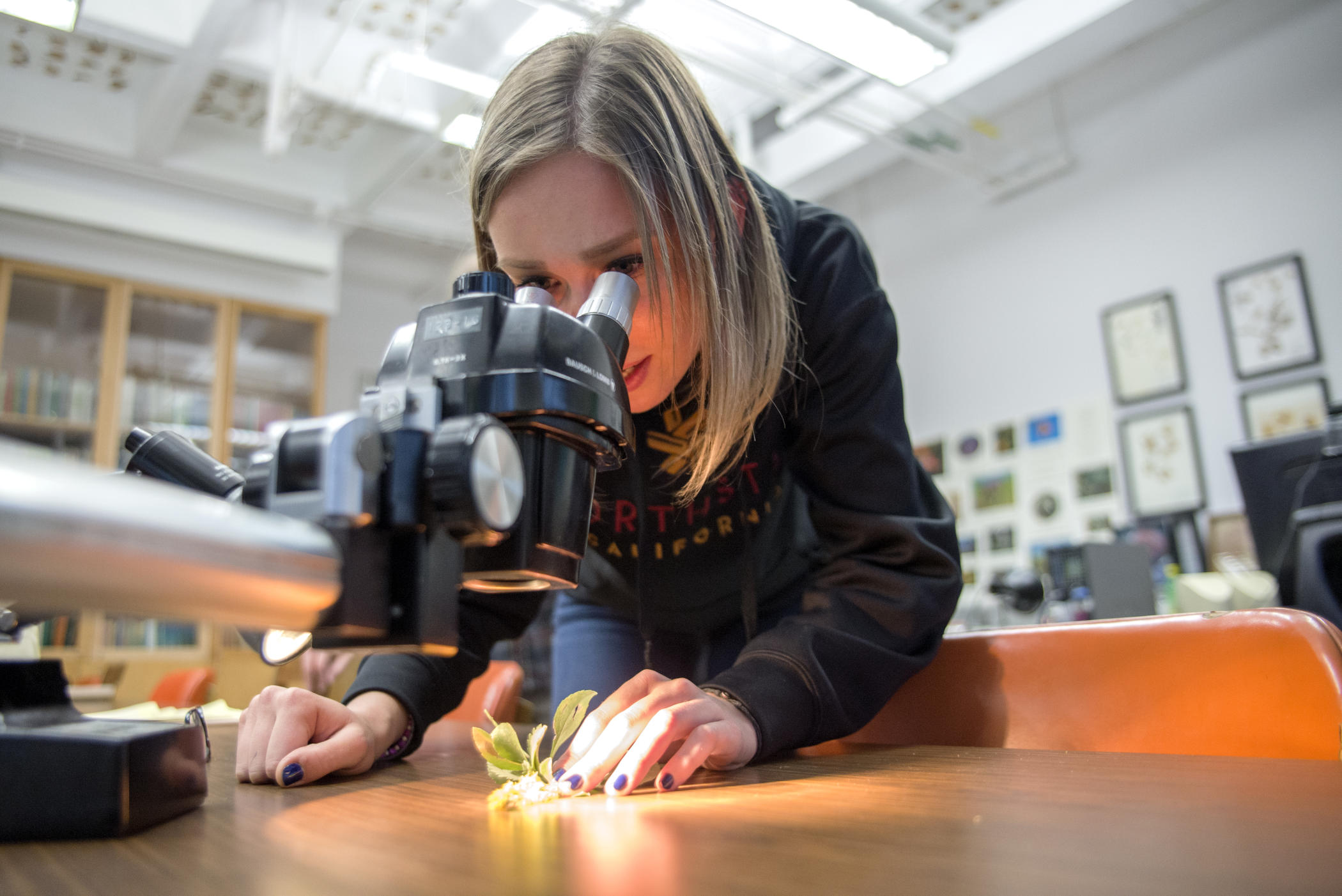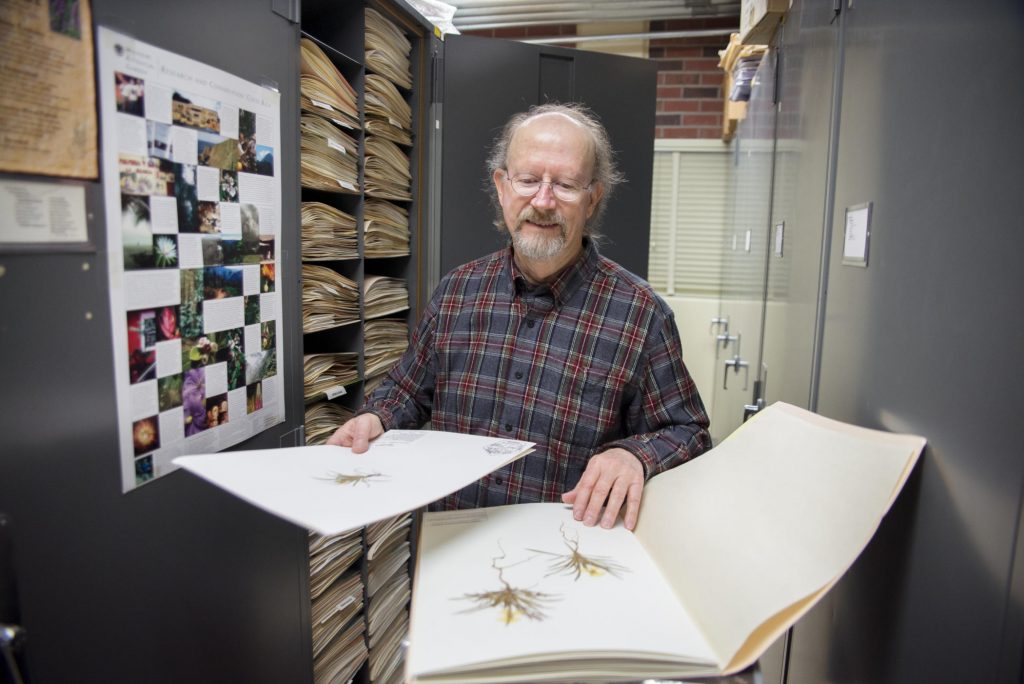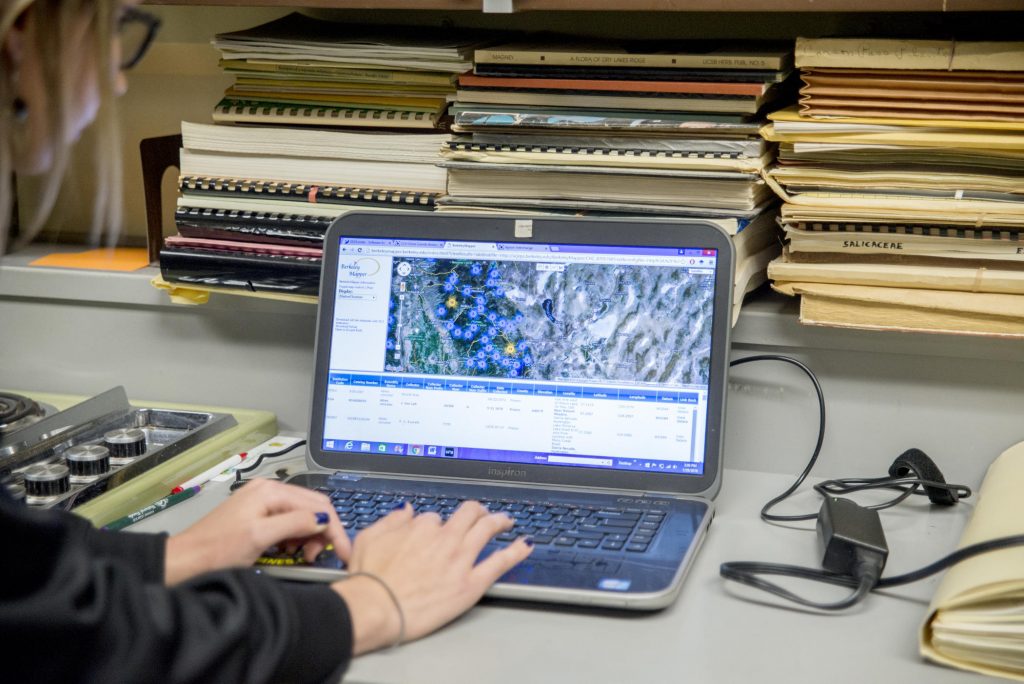Supporting a North State Resource

Chico State’s Herbarium is a key contributor to local ecological research
It was in the Himalayan village of Khoplang that graduate student Badri Ghimire says he fell in love with the wilderness. As a child, the master’s in biological sciences candidate would walk two hours each way to school through the forest of Nepal’s western Gorkha district, carefully observing the trees and animals that lived there.
In Nepal, protecting the environment is often a spiritual matter, said Ghimire, who worked with rhinos, elephants, and big cats as an undergraduate and graduate student in environmental sciences at Tribhuvan University in Kathmandu.
“Even though they don’t have modern scientific knowledge for the conservation of plants or conservation of animals, people think that if they pray to those plants, if they pray to those animals, that God will be happy with them—and this is still a type of conservation,” he said.
In America, he says, conservation hinges on science.
So, 7,000 miles away from where he grew up, Ghimire and agriculture science senior Kristin Quigley are collecting data to give experts and environmentalists across the nation a clearer picture of California’s ecological past and critical information for its future. Species by species, their task is “georeferencing” 40,000 rare plant specimens by locating and mapping the plants’ GPS coordinates for the Chico State Herbarium’s database.
Ghimire and Quigley have digitally travelled to hillsides, riverbanks, fields, parks, and, in some cases, residential and business developments across Northern California, following clues left by collectors to pinpoint collection sites. Some plants they’ve tracked down were collected, pressed, and preserved by Vesta Holt herself, who, from 1926 to 1957, started an archive with her students that would grow into today’s herbarium.
The University’s herbarium is the largest in the Central Valley north of Davis, making it a key contributor to the Consortium of California Herbaria and a sought-after research resource.
The herbarium’s entire collection totals more than 117,000 specimens.
Located on the first floor of Holt Hall, the number and diversity of plants contained in the unassuming metal lockers that house the archive is largely due to an incredibly active and passionate community of collectors, including retired rancher and Friends of the Chico State Herbarium (FOH) volunteer Lowell Ahart, who has contributed close to 20,000 plants and spends numerous hours mounting and labeling specimens of museum quality for the herbarium.

“Anything over 8,000 is impressive,” said herbarium curator Lawrence Janeway (MS, Botany, ’91), who has managed Chico State’s collection in one way or another since 1985 and has logged just shy of 12,000 specimens himself.
Janeway is so committed to the herbarium that he and his wife Barbara Castro (MS, Botany, ’89) use the database to plan plant-collecting vacations around the North State. He also recently requested a decrease in hours from his full-time job as a botanist for Plumas National Forest so he could focus on curating.
Janeway’s curatorial duties include collecting, processing, identifying, archiving, and entering new specimens into the database; maintaining existing specimens; ordering supplies; coordinating work study students, FOH volunteers, and researcher visits; staffing the herbarium; acting as a resident expert on sedges; and fielding information requests from other universities and agencies.
“The herbarium puts us on the map and keeps us there,” said herbarium director and biology professor Colleen Hatfield. Besides being an important resource for the local community, region, and state, the herbarium establishes Chico State as a leader in the field and provides students with hands-on research experience, she says.
Hatfield says recording more than a century’s worth of ecological change helps educators, scientists, conservationists, policymakers, and state agencies respond more effectively to climate change and mitigate the adverse effects of human development.
“We’ve worked a lot—me, the Friends, and the curator—to keep it open,” Hatfield said, as she described cuts that eliminated university funding for the curator position about eight years ago, nearly forcing Chico State to dismantle its collection and send it off to other herbaria.
But the FOH volunteers wouldn’t let that happen. Instead, they pooled donations and fees earned from community education and technical training workshops to fund Janeway’s position, which is eight hours per week and allows the herbarium to remain open on Fridays.
The funding also means he’s able to mentor students like Ghimire and Quigley.

Quigley says she wants to “use plant science to feed the world.” And, while the georeferencing project isn’t directly related to her future career plans, she is an “all-around plant nerd” from Paradise who loves the “idea of understanding the whole ecology of plants so we can live in sync with our environment.”
Many who spend time combing through the herbarium’s folders, examining the intricacies of each leaf, stem or flower, seem to develop their own special relationship with the plants, the history, and mission of conservation.
This year, Hatfield and the FOH board were blown away when “a very passionate individual stepped up” to launch the herbarium’s first coordinated fundraising effort, giving the biology department and herbarium lovers just six weeks to match the anonymous gift. The board exceeded its original goal by $15,000.
That fall fundraiser was the first step in building up the herbarium’s endowment so it will one day generate enough money to fund the curator position indefinitely.
“It’s been a long, hard journey for these people,” Hatfield said. “It’s a true act of passion that they stay so engaged—and we are truly indebted to their devotion and diligence.”


